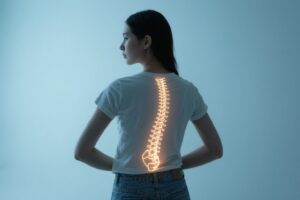
As healthcare professionals, we’re always striving to extend the benefits of in-clinic treatments and empower patients to take ownership of their recovery. One of the most promising advancements in this direction is the integration of home-based spinal therapy, particularly through self-decompression techniques. When implemented correctly, home decompression tools can complement manual therapy, improve outcomes, and reduce patient dependency on in-person visits, while maintaining clinical oversight and care quality.
Self-decompression refers to non-invasive techniques that allow patients to gently stretch and decompress their spine at home. These methods aim to relieve pressure on spinal discs, joints, and nerves, particularly in conditions like herniated discs, degenerative disc disease, and sciatica. Devices such as the Backrack are designed by spinal specialists and replicate the effects of clinical spinal decompression. They encourage proper posture, restore natural curvature, and reduce compressive forces on the spine, all without medication or surgical intervention.
Patients typically spend only a small fraction of their time under direct supervision. By equipping them with effective home-based tools, you allow them to reinforce spinal mobility and alignment between sessions. This can accelerate recovery, maintain progress, and reduce relapse rates.
One of the goals of modern rehabilitative care is to encourage patients to take an active role in their treatment. Home decompression fits perfectly into this model. When prescribed and supervised appropriately, it builds a sense of accountability, independence, and empowerment, key ingredients for long-term success.
With many patients facing time or mobility constraints, home therapy can bridge the gap between appointments. Tools like the Backrack are easy to use, safe, and require no power or settings, making them ideal even for older adults or those with limited fitness levels.
Chronic low back pain
L5–S1 disc compression or herniation
Sciatica with nerve impingement
Postural syndromes and muscular imbalances
Patients with sedentary lifestyles or desk jobs
Used correctly, these devices can relieve symptoms and reduce reliance on painkillers, while still allowing you to monitor and adjust care plans based on progress.
Home decompression therapy doesn’t replace hands-on care, it supports it. As a practitioner, you can assess spinal mechanics in-clinic and then recommend daily or alternate-day decompression sessions using a safe, targeted device. Many patients report greater comfort, better sleep, and reduced flare-ups when this hybrid approach is followed. The key is proper patient selection, instruction, and follow-up. Demonstrating how to use the device correctly during a session ensures safety and maximises benefit.
Integrating home-based self-decompression therapy into your practice provides patients with a valuable tool to support their recovery from chronic spinal conditions. Not only can it improve clinical outcomes, but it also aligns with patient-centred care by promoting independence and long-term spinal health. As more professionals seek to offer holistic, scalable solutions, self-decompression is quickly becoming an essential part of modern spinal therapy.






Sign up our newsletter to get article update about backrack therapy.